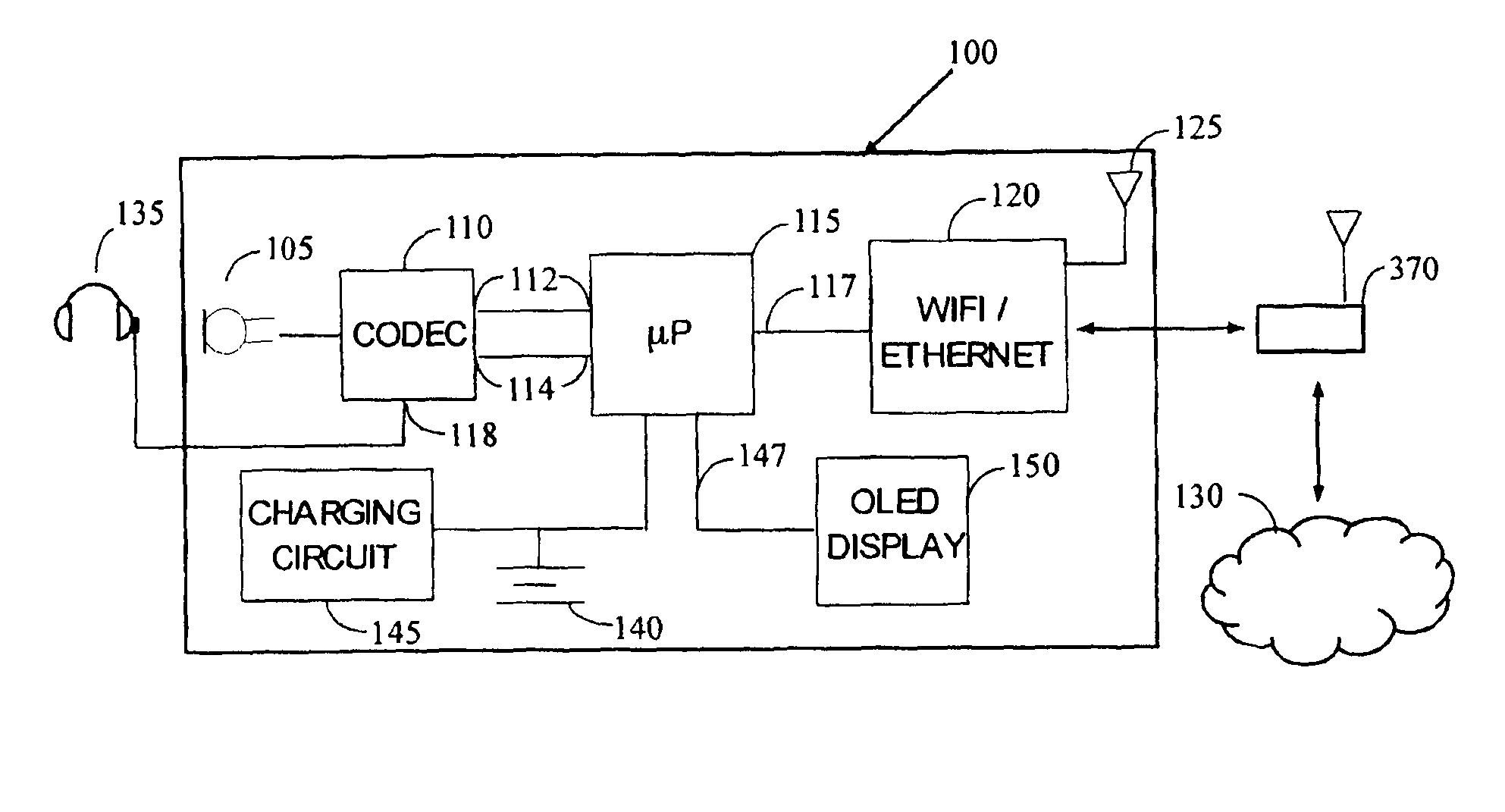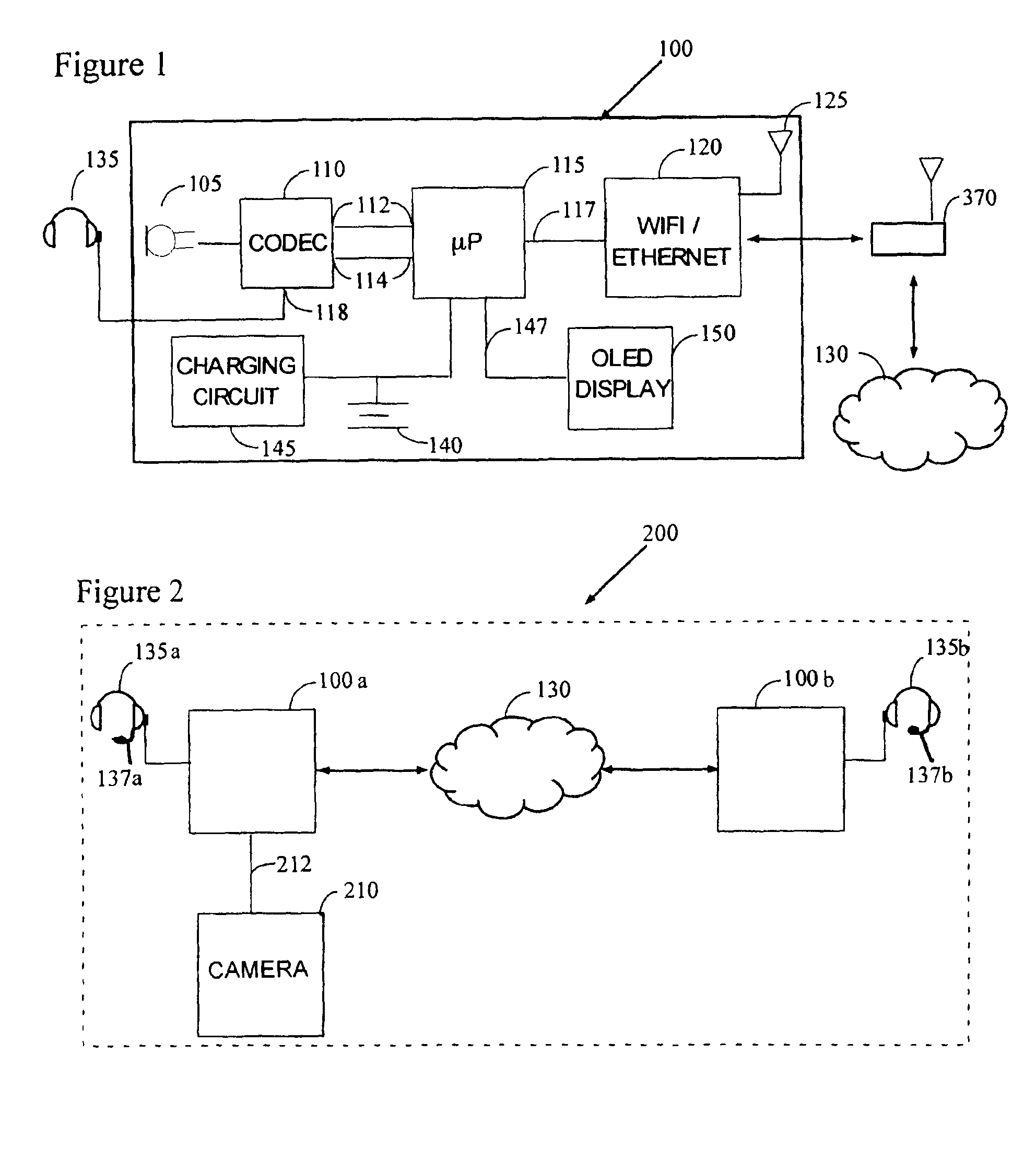IP based microphone and intercom
a microphone and intercom technology, applied in the field of ip based microphones and intercoms, can solve the problems of users who may have a problem in abandoning equipment, high quality and expensive equipment, and being mixed and mistaken for each other, so as to improve the quality, reduce power consumption, and prolong the battery life
- Summary
- Abstract
- Description
- Claims
- Application Information
AI Technical Summary
Benefits of technology
Problems solved by technology
Method used
Image
Examples
Embodiment Construction
[0031]Referring now to the drawings wherein the reference numbers indicate the same parts throughout the several views, there is provided a bidirectional wireless microphone station that communicates audio data via an Internet protocol (“IP”).
[0032]Turning first to FIG. 3, there is provided a preferred bidirectional wireless microphone embodiment 100 suitable for use with the instant invention. In the preferred arrangement, the instant microphone 100 will sense audio information as is conventionally done with, for example, a condenser-type microphone but, instead of transmitting the audio information by analog means as is conventionally done (e.g., via a microphone cable or wirelessly via an RF signal), the instant invention will send packetized audio via IP (either wired or wirelessly) from the microphone 100 to a remote terminus (e.g., a mixing board 310). Additionally, in some preferred embodiments (e.g., FIG. 1) the instant invention will be configured to receive packetized audi...
PUM
 Login to View More
Login to View More Abstract
Description
Claims
Application Information
 Login to View More
Login to View More - R&D
- Intellectual Property
- Life Sciences
- Materials
- Tech Scout
- Unparalleled Data Quality
- Higher Quality Content
- 60% Fewer Hallucinations
Browse by: Latest US Patents, China's latest patents, Technical Efficacy Thesaurus, Application Domain, Technology Topic, Popular Technical Reports.
© 2025 PatSnap. All rights reserved.Legal|Privacy policy|Modern Slavery Act Transparency Statement|Sitemap|About US| Contact US: help@patsnap.com



